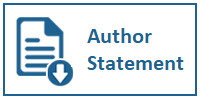EMOTIONLESS DECISION. A COIN FLIP INVESTMENT DECISION, IS THAT WORTHED?
DOI:
https://doi.org/10.31937/manajemen.v14i2.2878Abstract
Abstract- This article tries to test whether emotionless decisions (a coin flip) in investment decision-making could outperform human judgment due to superiority in avoiding behaviour bias caused by emotion. However, research about a coin flip in the investment decision is rarely can be found due to a lack of a solid foundation. Research problem in this article: Would the coin flip in investment decisions outperform human judgment in terms of investment wealth under the short-term trading range? The originality of this research is no prior research has been interested in checking the superiority of coin flip decisions in real investment due to the risk of uncertainty. This research finds a suitable environment (stock market competition) as the place to check the validity of the idea. This research uses a simple coin flip experiment to decide whether to sell or hold the investment asset during the stock competition. The result of investment wealth from the coin flip will be compared with the rest of the participants. A standard normal distribution (z) and (t) is used to check whether the coin flip wealth consistently falls into the top 5% or 1% of the right tail. Before that, the Kolmogorov-Smirnoff test is conducted to ensure the distribution follows the normal distribution shape. Using a coin flip for investment decisions is not outperform human judgment and winning the competition. Investment decision-making is an art between handling complex rational thinking about risk and managing the emotion in the process.
Keywords: Coin Flip Decision; Investment Decision; Stock Competition; Emotionless Decision
Downloads
Downloads
Published
How to Cite
Issue
Section
License
Authors retain copyright and grant the journal right of first publication with the work simultaneously licensed under a Creative Commons Attribution-ShareAlike International License (CC-BY-SA 4.0) that allows others to share the work with an acknowledgement of the work's authorship and initial publication in this journal.
Authors are able to enter into separate, additional contractual arrangements for the non-exclusive distribution of the journal's published version of the work (e.g., post it to an institutional repository or publish it in a book), with an acknowledgement of its initial publication in this journal.















